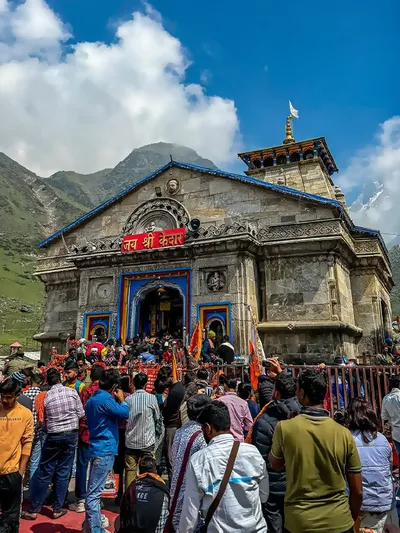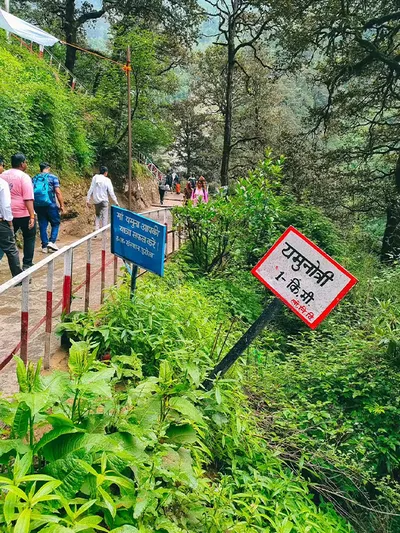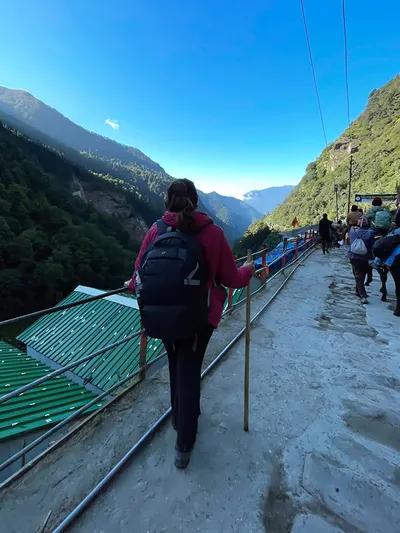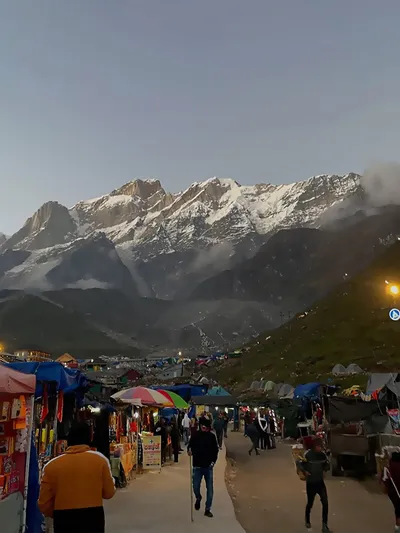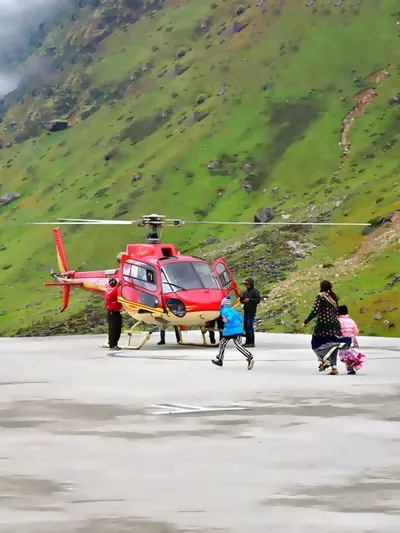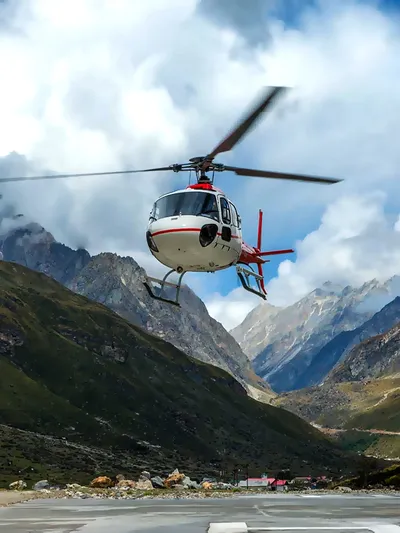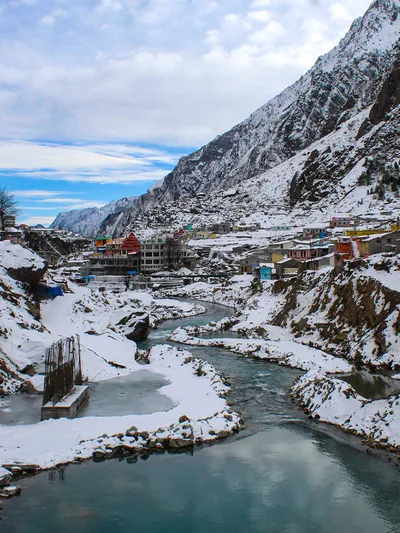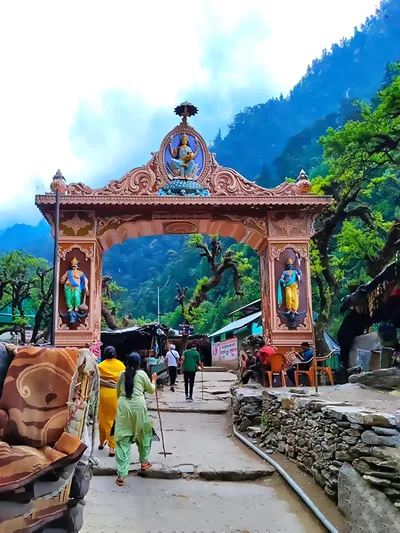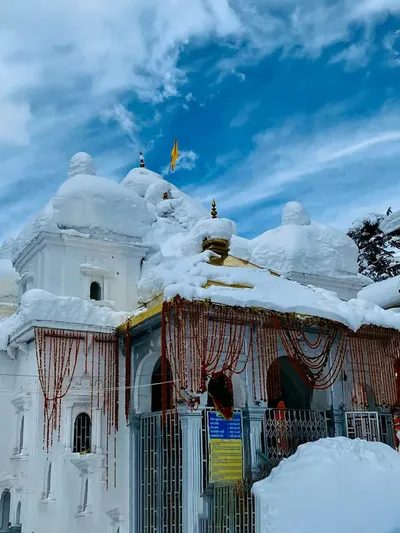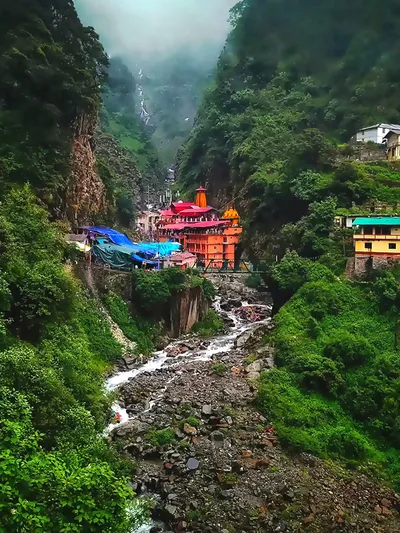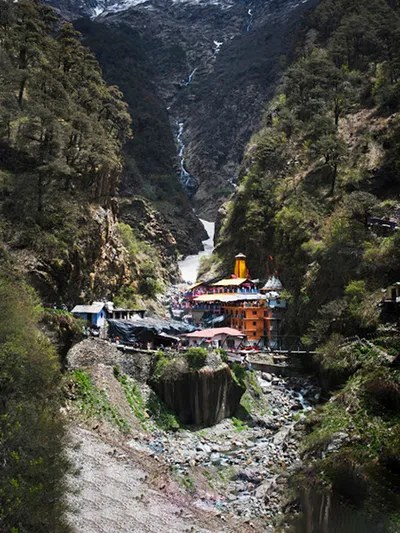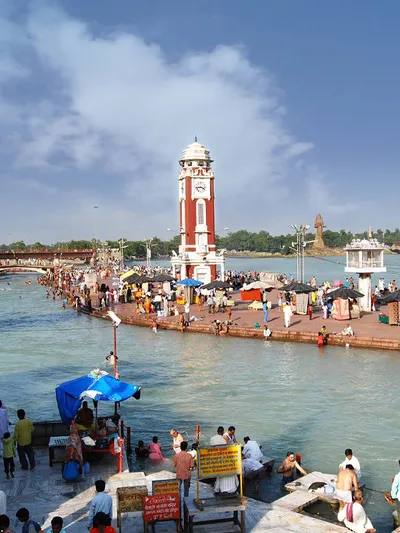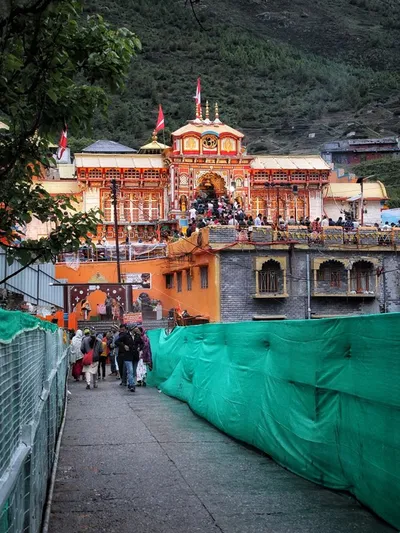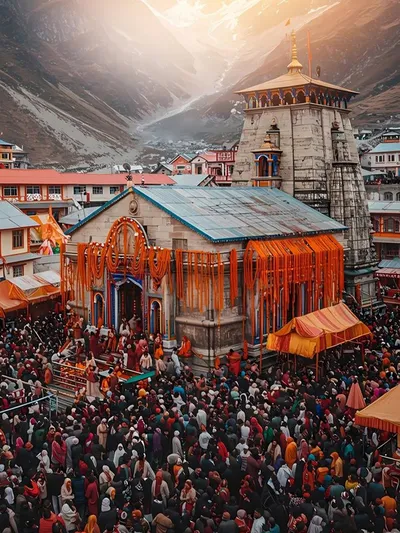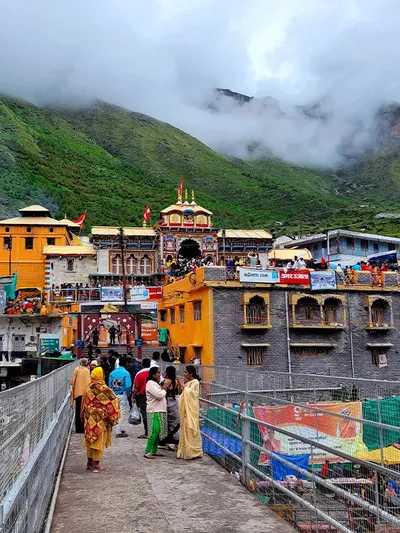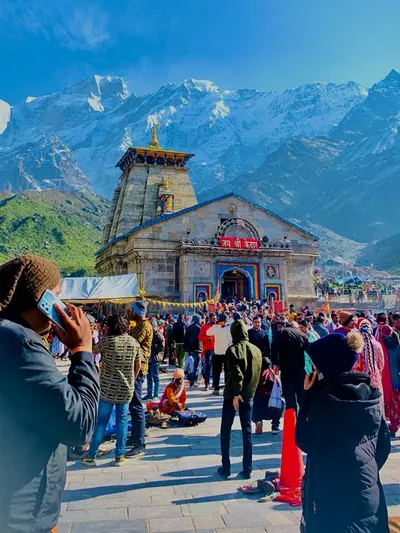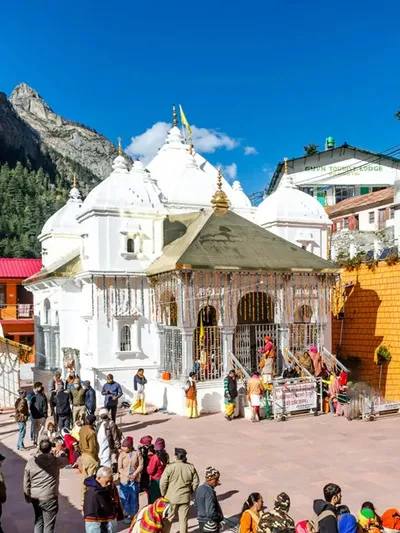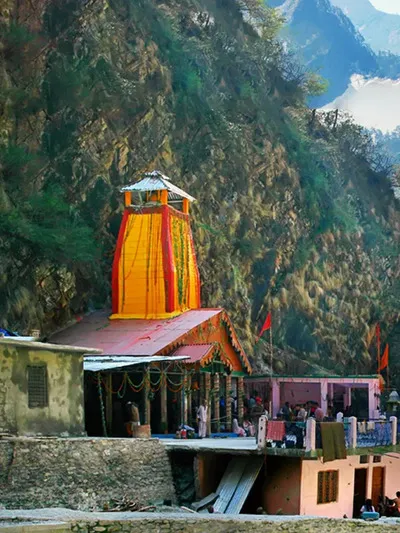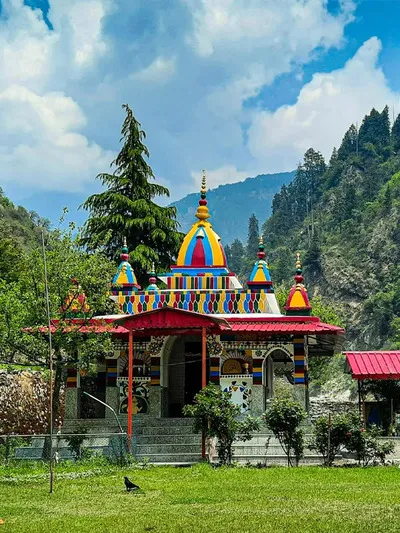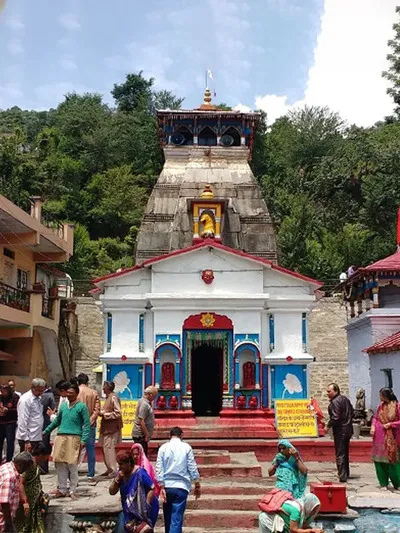Char Dham of India
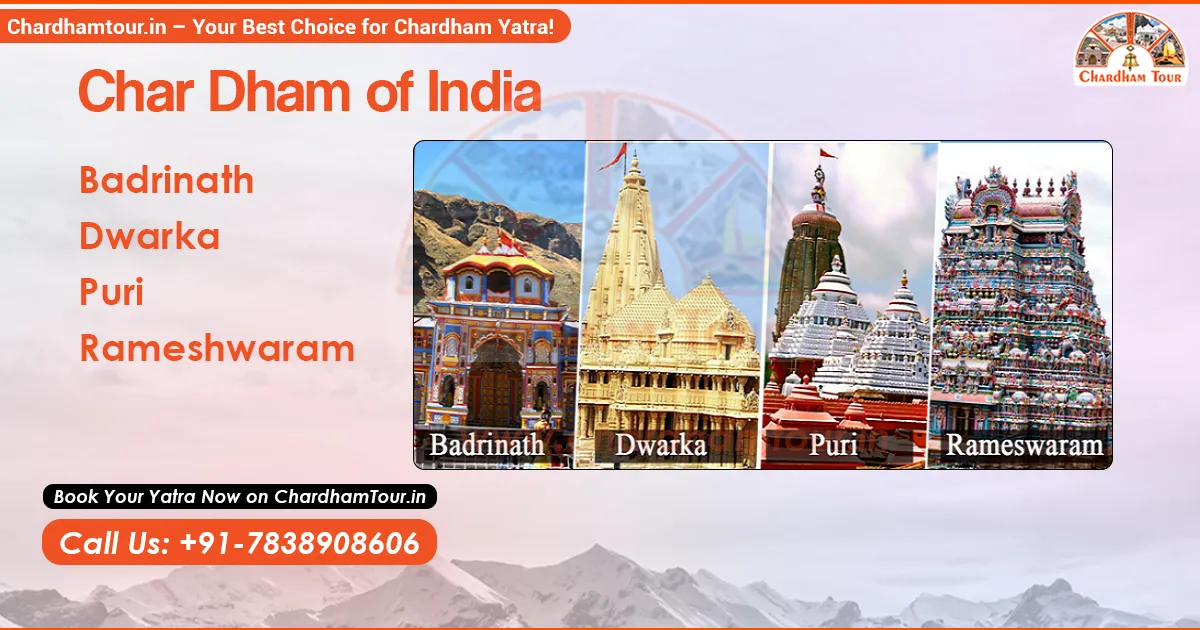
Char Dham tour opens the door of salvation and offers you the best spiritual experience of your life. As you undertake this sacred yatra you get a chance to build a connection with God and get rid of the sins you have committed. Char Dham yatra encompasses the tour of four of the holiest sites Yamunotri, Gangotri, Badrinath, and Kedarnath. Gangotri is dedicated to Goddess Ganga, Yamunotri to Goddess Yamunotri, Badrinath to Lord Vishnu, and Kedarnath to Lord Shiva. Bada Char Dham includes the exploration of Badrinath, Rameshwaram, Dwarka, and Puri and these four sites are perched in four different directions of the country. Every Hindu should undertake the Char Dham yatra at least once in their lifetime to experience divinity like never before.
The Char Dham Yatra’s starting point is Yamunotri, which further continues to other sacred destinations like Gangotri, Kedarnath, and Badrinath. Since the sacred pilgrimage includes crossing rivers, traveling at high altitudes, and visiting holy shrines via bumpy mountain roads, steep and steep terrain you must be physically fit. There are various ways to undertake the yatra including pony rides, treks, and helicopter rides and you can choose the best option as per your preference and fitness level.
List of Bada Char Dham Yatra Places
Badrinath
Badrinath is situated at around 3,100 m elevation on the Alaknanda River bank in the Garhwal Himalayas. This sacred town is perched between the Nar and Narayana mountain ranges and is known for its divine ambiance and breathtaking views. The main attraction of the town is the Badrinath Temple that sage Adi Shankaracharya built in the eighth century. The presiding deity of the temple is Lord Vishnu and it remains open for six months. There are fifteen other deities and idols within the premises of the temple, some situated in the inner sanctum. These include Garuda (Lord Vishnu’s vehicle), Uddhava (Lord Krishna’s friend), Kuber (the god of wealth), Lord Ganesh, Nara and Narayana, Shridevi and Bhudevi, and Goddess Lakshmi.
History
No one can tell how old Badrinath temple is, although its history can be traced to the Vedic Age in India, which started in 1,500 B.C. Badrinath also known in Hindu scriptures as Badrikashram, attracted many sages and saints during this period. In the post-Vedic texts, there are many references to Badrinath. It’s believed that Adi Shankara built Badrinath temple in the ninth century. Firstly, the temple existed as a Buddhist temple with a brightly-colored exterior and distinctly Buddhist architecture. Adi Shankara also founded Lord Vishnu’s fossilized black stone idol in the Alaknanda River. As per Hindus, Badrinath came into prominence when Lord Vishnu’s avatar Nar-Narayan did Tapasya there. During that period, Badrinath was full of berry trees, and Berries mean Badri in the Sanskrit language. Therefore, this place came to be known as Badrika-Van due to the Berries trees abundance. Badrinath temple is the place where Nar-Narayan did Tapasya and was saved from rain and sun by a large berry tree.
Why Visit
Badrinath is known to be one of four Char Dham abodes of Lord Vishnu’s incarnations that are spread across different parts of India, in four directions. The Badrinath temple houses a 3.3-foot-tall Lord Badrinarayan’s black stone idol sitting in a meditative pose under a Badri tree rather than his usual reclining pose. Badrinath temple has been mentioned in some of the most sacred texts like Skanda Purana, Bhagavata Purana, and Bhagvat Geeta. Badrinath is also known for its unadulterated beauty, breathtaking landscapes, and natural wonders.
Opening and Closing Time
Badrinath opens tentatively in May during the Akshaya Tritiya festival at 4:30 am. The temple closes on Bhai Dooj which is usually held in November.
Dwarka
Dwarka is a sacred city dedicated to Lord Krishna. It is located on the Okhamandal peninsula and falls within Gujarat, India. It has ancient temples, sacred lakes, pristine beaches, and much more. October to March (Winter season), is the peak pilgrimage time due to calm and comfortable weather.
History
As per Hindu mythology, Dwarka is believed to be a city where Krishna, Vishnu’s eighth avatar, once lived. It is also believed that Mathura is the birthplace of Krishna located in the state of Uttar Pradesh just south of Delhi. His uncle, Kansa, was this city’s tyrannical ruler and Krishna eventually killed him. Jarasandh, the king of Magadha and Kansa’s father-in-law became furious when he got the news of Kansa’s murder and tried his best to seek revenge for his death. It is also believed that after Lord Krishna’s death, an extensive flood came and the entire city got sunken under the water.
Why Visit
Dwarka is known to be one of the seven holy pilgrimage sites in India. It holds the reputation of being the only city that forms a part of Sapta Puris (seven sacred Hindu cities) and Char Dham (four main holy sites). It houses an island, Beyt Dwarka, an island, and is the focal point for tons of events that surround the life of Krishna. The main attraction of Dwarka is the Dwarkadhish Temple, one of the country’s most sacred sites built by the great-grandson of Lord Krishna. Dwarka has many picturesque beaches where you can soak in the sun and enjoy water-based activities.
Opening and Closing Time
Dwarkadhish Temple opens at around 6:30 pm and closes around 9:30 pm.
Puri
History
In the ancient period, Puri was known as Charitra, but many people also doubted this. When Chodaganga Deva built the Purusottama Jagannath’s temple with the idol Krishna as Jagannath with his Sister and Brother, the place came to be known as Purushottam Puri or Purushottam Kshetra. The name was later shortened and named Puri. From the Mughal to the British region, Puri has undergone many renovations and changes. One of the most crowded and oldest chariot processions Rath Yatra is organized in Puri.
Why Visit
Puri is known for its ancient temples, splendid beaches, and vibrant culture. The main attraction of Puri is Jagannath Temple dedicated to Lord Jagannath. The famous beaches of the city—Puri Beach and Swargadwar are ideal for relaxation and water-based activities. In Puri, you can also witness Rath Yatra where a spectacular procession is carried out. The Puri Beach Market is a hub of commerce and culture and exhibits a colorful display of local tradition and craftsmanship.
Opening and Closing Time
The opening time of Jagannath temple is 5:00 AM and the closing time is 11:00 PM.
Rameshwaram
History
Rameshwaram Temple’s history is closely associated with the Ramayana, which narrates Lord Rama’s story. As per the legend, after killing Ravana in Sri Lanka Rama wanted to worship Shiva, to absolve himself of the sins. He asked Hanuman to bring a lingam from Kashi (Varanasi), but Hanuman could not return on time. Therefore, Sita, the wife of Rama made a lingam out of sand and worshipped it at Rameshwaram. This lingam was later known as Ramalingam and is the temple’s main deity. The lingam that Hanuman brought from Kashi is called Vishwalingam and is also installed in the main temple.
Why Visit
Rameshwaram has many ancient sites, bird sanctuaries, and historic bridges. The main of Rameshwaram is the Panch-Mukhi Hanuman Temple where you can see five different faces including Lord Hanuman, Lord Narasimha, Lord Adivaraha, Lord Garuda, and Lord Hayagriva. The childhood home of A.P.J. Abdul Kalam, India’s 11th president is in Rameshwaram. You can also head to Jada Theertham, where Lord Rama after killing Ravana worshiped Shiva Linga, and the giant bird Jatayu died while saving Sita from the demon King Ravana.
Opening and Closing Time
Morning: 5:00 AM – 1:00 PM
Evening: 3:00 PM – 9:00 PM
Badrinath Dham
History
Badrinath Temple is one of the oldest pilgrimage sites in the Hindu religion. The Badrinath Temple is dedicated to Lord Vishnu known to be the protector among the Hindu Gods. The iconic Lord Vishnu’s one-meter-tall black stone idol is one of the eight Swayam Vyakta Kshetras or self-manifested statues. As per the legend two sons of Dharma, Narayan and Nar, wanted to take shelter in the awe-inspiring Himalayan peaks. They were looking vigorously for a tranquil and serene place to set up their hermitage. After an extensive search, they discovered Panch Badri’s four sites:- Yog Badri, Bridha Badri, Dhyan Badri, and Bhavisya Badri. On cold and hot springs behind the sacred Alaknanda River, they took shelter. They named this site Badri Vishal, and like this, the town got its name.
Why Visit:
The Badrinath Temple is one of the most sacred Hindu sites known for its rich past. It is perched along the River Alaknanda’s banks and is considered Lord Vishnu’s most important temple. The temple was established by Adi Shankaracharya. He founded Lord Vishnu’s Shaligram idol immersed in the River Alaknanda. He installed the Shaligram idol in a small cave near the Tapta Kund. The temple has three distinct structures; the Darshan Mandap (worship hall), the Garbhagriha (sanctum), and the Sabha Mandap (convention hall). Badrinath temple’s main entrance gate is colorful and known as Singhdwar. It is believed that by visiting the temple you can achieve salvation and get rid of the sins you have committed.
Opening and Closing Time
Badrinath Temple remains shut every year for around six months, opening in April or May (summers) and closing with winter’s onset (October or November).
Kedarnath Dham
History
In Skanda Purana, you can find the earliest reference to Kedarnath. As per Skanda Purana Kedarnath is the site where Holy Ganga is released by Lord Shiva from his matted hair. As per the legend, the Pandava brothers after the Mahabharata war built the temple. It is believed that the Pandava brothers sought Lord Shiva’s blessings to absolve themselves of all the sins related to Mahabharat. Kedarnath became a Jyotirlinga, representing the cosmic form of Lord Shiva.
Why Visit
Kedarnath is one of the most sacred destinations in India also known to be one of the Panch Kedars. It is believed that Adi Shankaracharya restored the Kedarnath temple and it was built by Pandavas. Inside the temple, you’ll find a small hall with beautiful images of the Pandavas and Goddess Parvati. The hall is adorned beautifully with statues of Draupadi, Virbhadra, Krishna, Pandavas, and other deities. Inside the temple, there is a conical rock that is worshipped by the devotees as the Sadashiva. The Kedarnath temple is situated amidst the Garhwal Himalayan ranges and is visited each year by thousands of pilgrims and tourists. Other prominent attractions in and around Kedarnath include Vasuki Tal and Chopta.
Opening and Closing Time
Kedarnath Temple opens in May and closes in November.
Gangotri Dham
History
Gangotri is a sacred destination where for the first time Ganga touched earth. As per Hindu mythology, Goddess Ganga took the river’s form to absolve King Bhagiratha’s predecessors’ sins, following his penance of centuries. Mother Ganges descended on earth from Lord Shiva’s matted hair to provide grace and spiritual healing to the people.
Why Visit
The captivating mythology and rich history of Gangotri Dham make it an important destination for nature lovers and Hindu devotees. As you embark on your adventure or pilgrimage to Gangotri Dham it is a journey of spiritual bliss and self-discovery. You can visit the Gangotri temple which is perched at around 3,100 meters to pay your offerings to Goddess Ganga. The temple can be accessed via road or trek journey from the town.
Opening and Closing Time
The Gangotri temple opens at around 6:15 am till 2:00 pm. The temple reopens at around 3:00 pm and closes around 9:30 pm.
Yamunotri Dham
History
Yamunotri Temple’s origin is traced back to ancient times. As per Hindu mythology, it is believed to be the Yamuna River’s birthplace. As per the legend sage Asit Muni meditated here leading to the Yamuna River’s manifestation. Naresh Sudarshan Shah, King of Tehri constructed the Yamunotri Dham temple in 1839. Maharani of Jaipur Gularia Devi reconstructed the temple in the nineteenth century AD after it got damaged due to an earthquake.
Why Visit
Yamunotri is a sacred site that constitutes the Char Dham Yatra, alongside Badrinath, Gangotri, and Kedarnath. Pilgrims embark on the journey to Yamunotri Dham to cleanse their souls and seek spiritual enlightenment. The journey to Yamunotri opens the path to salvation. The trek to Yamunotri begins from Janki Chatti. The temple’s serene ambiance, surrounded by magnanimous peaks, invokes tranquility that touches every pilgrim’s heart.
Opening and Closing Time
The Yamunotri Temple opens at around 7 am or 8 am, and after a break from 1 pm to 4 pm it reopens and closes at 8 pm.
